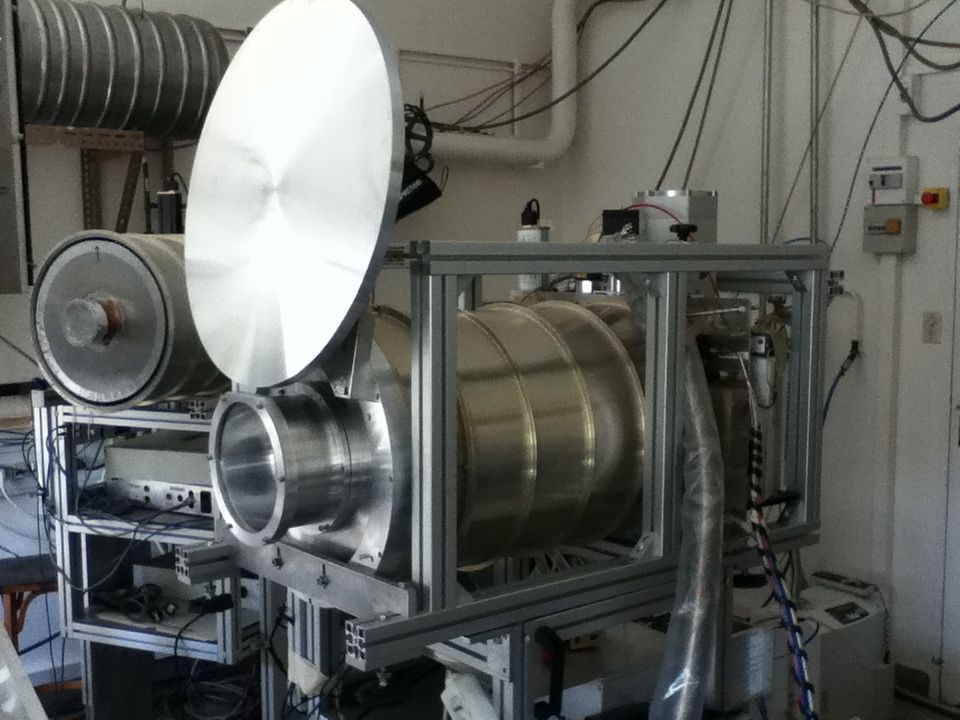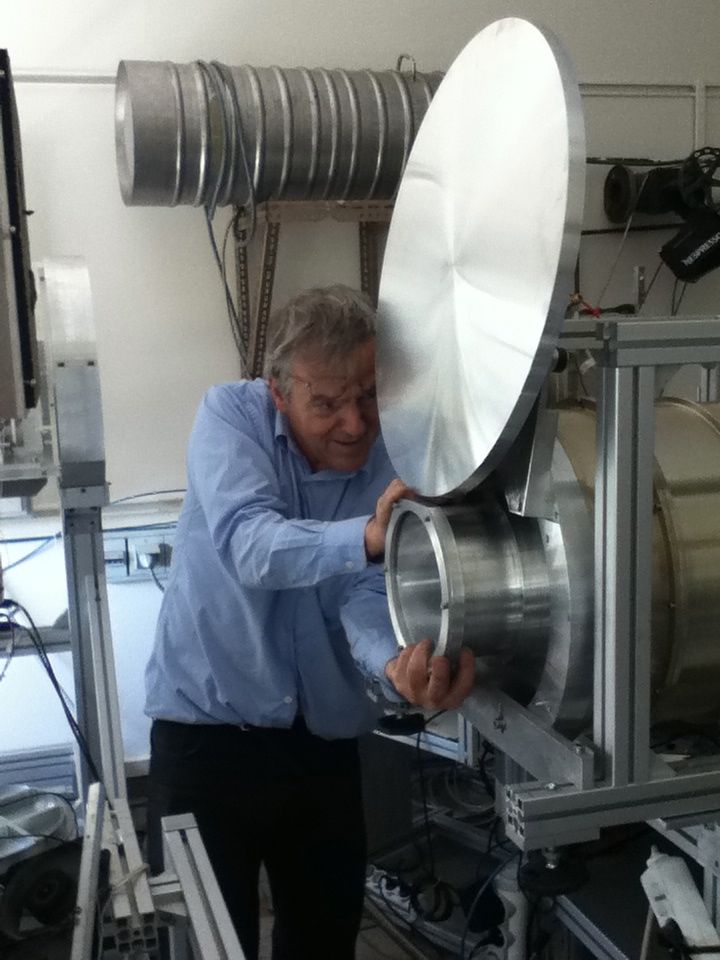|
Size: 5274
Comment:
|
Size: 3300
Comment:
|
| Deletions are marked like this. | Additions are marked like this. |
| Line 13: | Line 13: |
| == Detector information == COMMON FILTERS: IR-blockers at 150 K and 50 K; 13 cm-1 low-pass at 50 K; 11 cm-1 low-pass at 4 K; 10 cm-1 low-pass at 1 K. BAND 1.25 mm (dichroic in transmission) - NICA_8e (224 pixels array, Hilbert dual-polarisation design, pixels pitch 1.6mm on both x and y <=> 0.8 Fλ), 20-25nm (IRAM film), substrate 0.18 mm, backshort 0.47-0.49 mm. Amplifier SiGe Caltech LF4 (S/N 84, IRAM batch, Vd = 1.5 V). From laboratory measurements we estimate an NET of about 2-3 mK/sqrt(Hz) per pixel at 1 Hz. Central frequency 240-250 GHz (measured with the MpI). Resonances at 1.9-2.6 GHz (about 100 resonances, at the center, within the ROACH electronics band of 275 MHz). Two almost equivalent arrays are available (small differences in film thickness and backshort). Final decision will be made just before the run. BAND 2 mm (dichroic in reflection + 5.7 cm-1 low-pass + 3.9 cm-1 high-pass) - NICA_8c (132 pixels array, Hilbert dual-polarisation design, pixels pitch 2.3 mm on both x and y <=> 0.77 Fλ with the current optics), 20 nm (IRAM film), substrate 0.3 mm, backshort 0.7 mm. Amplifier SiGe Caltech LF4 (S/N 70, IRAM batch, Vd = 1.5 V). From laboratory measurements we estimate an NET of about 3-5 mK/sqrt(Hz) per pixel. Resonances at 1.3-1.5 GHz. Three almost equivalent arrays are available (same thickness, same backshort). One easy option is to use the same array mounted in 2011. FOV = 2.3’ diameter for each of the arrays if fully used (rq: potential of the new optical system & cryostat = 2.8’). MPI spectral transmission measurements (A. Monfardini, M. Calvo, FXD) of representative arrays can be found [[attachment:MPI_2012_04_13_v1.jpg|here]] and compared with [[attachment:MPI_2012_04_13_v2.jpg|Run#2 and #3]]. Maximum transmission is at 144 and 242 GHz. FWHM is 43 and 57 GHz. These are pseudo-transmission curves as they already include a nu^2 Rayleigh-Jeans weighting (the hot&cold load calibration source spectrum). |
NIKA run #4 (28 May - 5 June 2012)
List of Astronomical Targets
Day to day log book of observations
Offline processing results
Daily reports
Monday 14-05-2012
|
|
Saturday 19-05-2012
Je suis a 490 MHz sur la click FPGA soit un bin de 1.869 MHz je mets 50kHz de deviation modulation sur les 2 bandes matrice A : 1mm : 2.288149 GHz dac 3db HF 0 db sortie 10db - 1 ampli matrice B : 2mm : 1.3013 GHz dac 3db HF 20 db sortie directe - 1 ampli
12h51m11_0001_T scan table xy pas 5mm et 20% (50x50)
13h02m45_0002_B un balayage complet des 2 bandes la 1 mm a beaucoup bouge : je recherche les résonances sur les 2 matrices 13h29m01_B Je relance un balayage 13h31m01_0004_T puis une carte scan table xy pas 5mm et 20% (50x50) 13h48m41_B balayage complet la 1mm est montee en frequence de 110 KHz : je recentre la 1mm et ne touche pas a la 2mm
- petit balayage sur les 2 matrices pour recentrer le bins
13h58m01_0005_T Nouvelle carte avec un pas plus faible (3mm)
- mesures de bruit
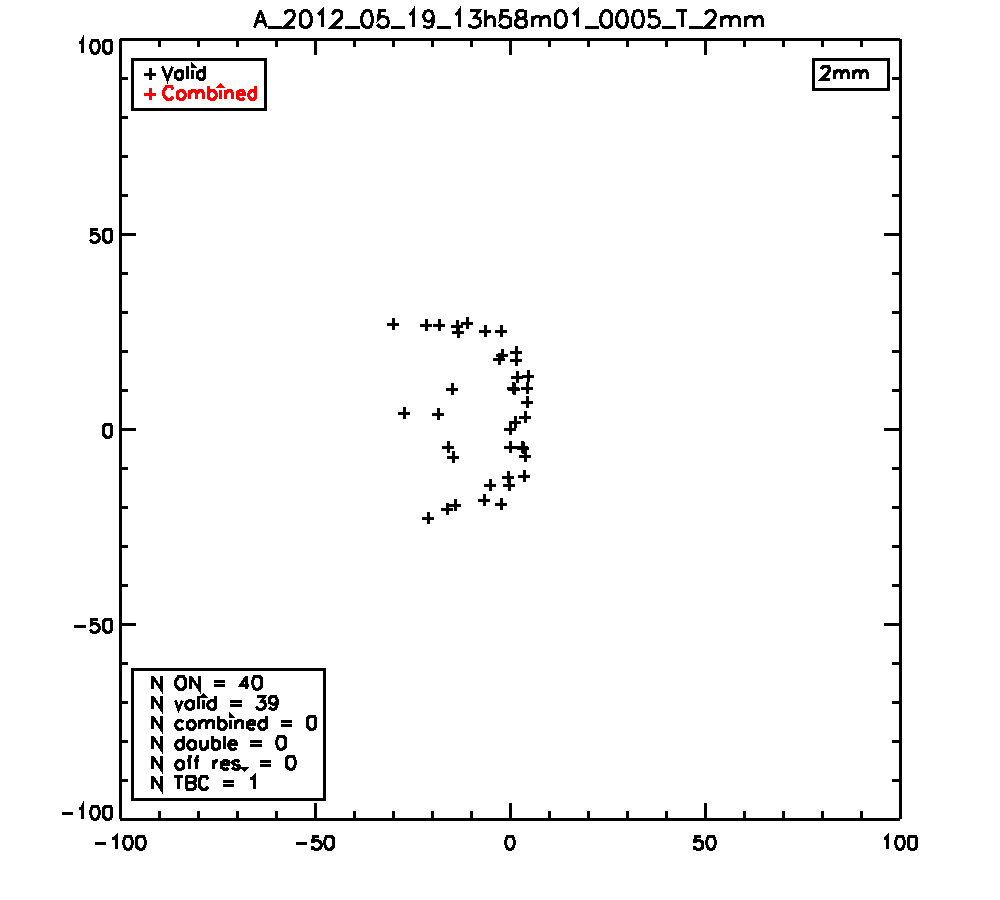
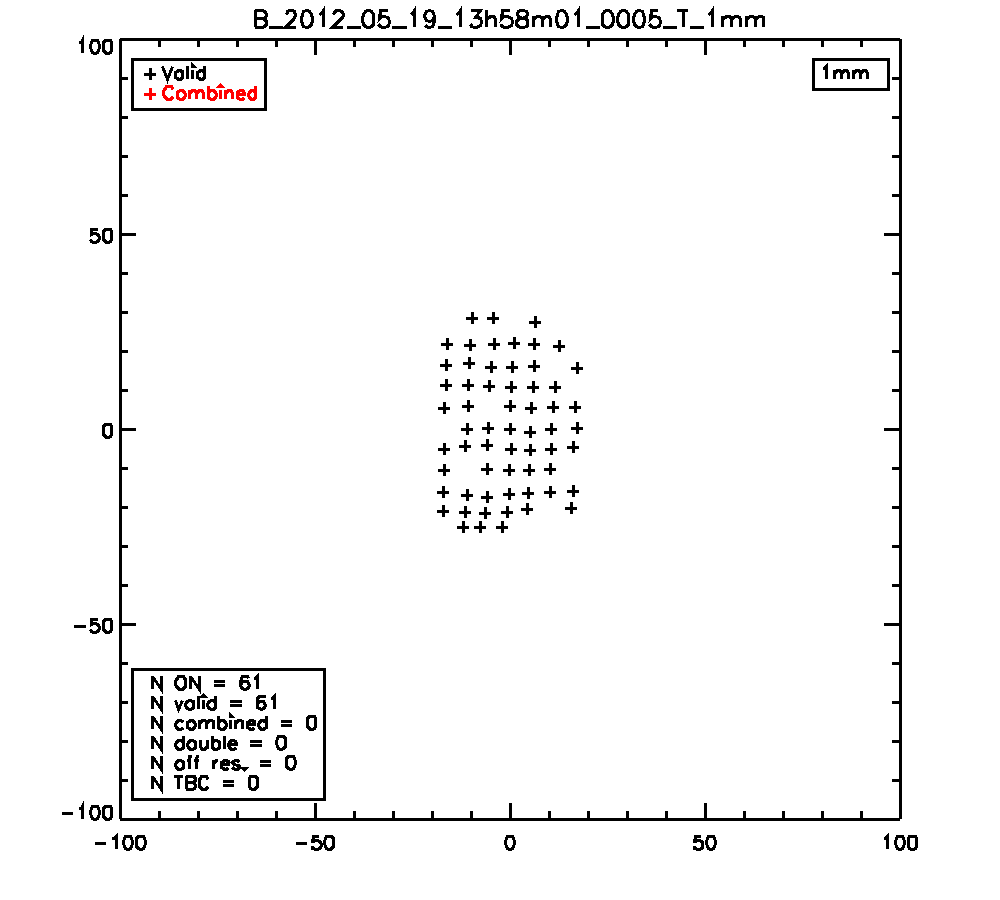
14h22m30 balayage complet pour regarder les derives: la 1mm est montee de 140 kHz (on est a 181 mK en train de refroidir lineairement 5mK par heure 14h30m57_0006_T encore une carte pas de 5mm apres un reglage pour voir la stabilite de la photometrie
- Il y a des sauts dus à des erreurs sur la roach A (pas d'erreur sur la roachB) : je fais kill dhclient3 (3304.3)
14h40m20_0007_T Un petit balayage et je refaits une carte : a priori, plus d'erreur et plus de sauts

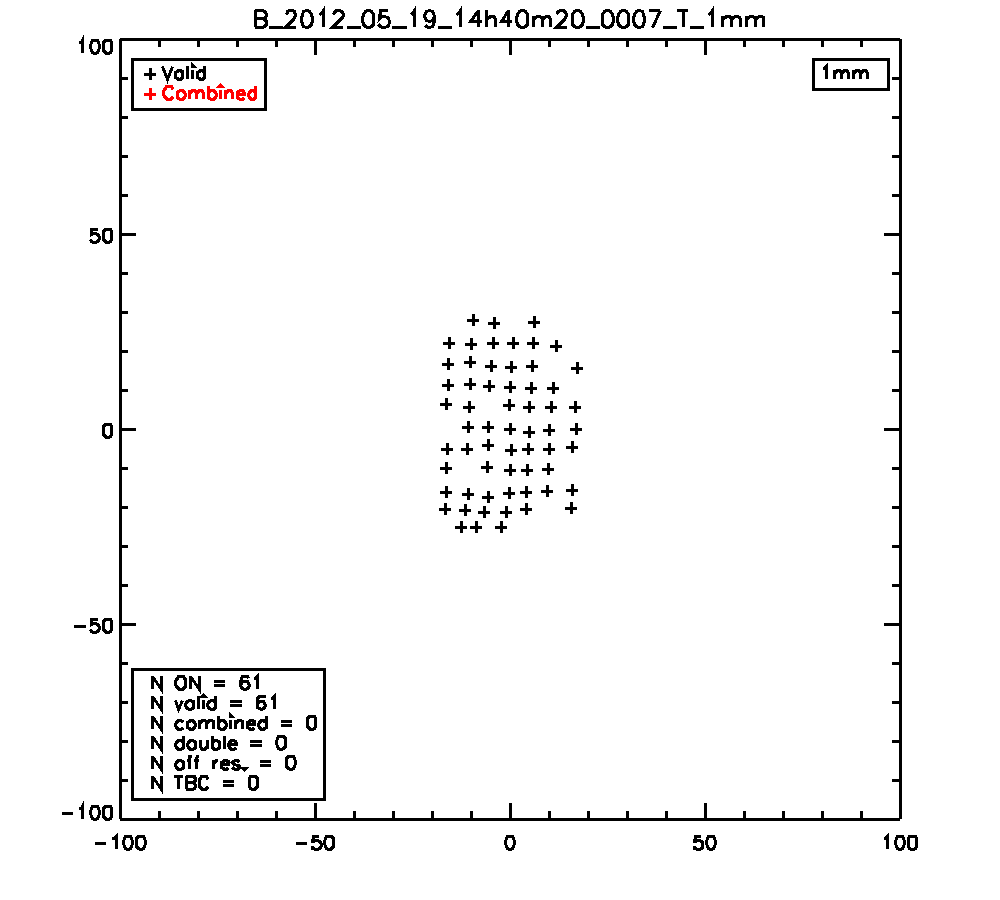
14h47m50_T 14h50 : corps noir a 12.32 ohm : je chauffe a 20V 1.3A puis 30V 2A
- 14h56 : corps noir a 13.09 ohm puis ca refroidis a nouveau 14h58 : j'enleve le bras et la bille puis je passe 2 fois une feuille de polystyrene mesure de bruit
15h10 : je baisse la puissance de 5db sur la matrice A : dac 3db HF 5 db sortie 5db - 1 ampli
- la frequence monte encore de 250 KHz : je recentre les resonnances qui sont plus belles
15h18m35_B Un balayage complet matrice A 15h20m08_B un petit balayage pour verifier et recentrer 15h22m50 2 passages d'une feuille de polystyrene puis mesure de bruit

